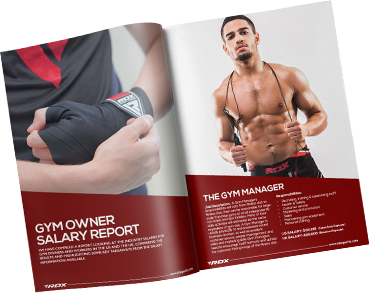The much-anticipated AI revolution is already here and it is transforming and redefining every aspect of our lives. The fitness and combat sports equipment sector is no exception. The advanced AI technologies are driving innovation, creating smarter, more personalised training tools, and redefining performance metrics.
With the help of AI and machine learning, manufacturers are manufacturing smart and efficient equipment that can adapt to individual needs, optimize workout routines, and provide real-time feedback. This transformative impact is setting new standards for training efficiency, safety, and effectiveness, paving the way for a future where technology blends with fitness and combat sports, and even redefines how athletes train and compete.
Let’s buckle up for a detailed account of the tech revolution in the making.
The Evolution of AI in Fitness Equipment
Over the years, fitness and combat sports equipment have evolved from the basic protective tools to highly sophisticated ones. Traditional weights and basic training aids have given way to advanced machines and smart devices, alongside the technological advancements.
This evolution mirrors the broader technological strides seen globally, reflecting a growing emphasis on precision, efficiency, and customisation in training.
The integration of AI and machine learning into fitness equipment marks the latest phase in this progression. AI-driven fitness trends are sweeping the industry with absolutely unprecedented levels of personalisation and interactivity.
For instance, smart wearables now monitor a variety of health metrics, providing real-time feedback and even customised workout plans. You don’t need a trainer or a bulky machine to tell you how you are doing your training and how your body is behaving while you are at it. It is all done by a smart sensor somewhere on your body or perhaps in your smart fitness apparel.
Plus, AI-powered fitness apps analyse user data to recommend optimised training regimes, adapting to individual progress and goals.
One such machine is AI-enhanced treadmills that adjust speed and incline level judging from a runner's performance and heart rate. Smart boxing gloves are also equipped with sensors that provide detailed analytics on punch speed, force, and technique, helping athletes refine their skills.
These innovations not only increase training efficiency but also optimize safety, reducing the risk of injuries by providing accurate insights and adjustments. The integration of AI in fitness and combat sports equipment is thus not just a trend but a significant leap towards more effective and personalized training experiences.
Machine Learning in Combat Sports Gear

The integration of machine learning into combat sports gear is pushing the boundaries of what athletes and trainers can achieve. Innovations in this area are providing new tools that enhance training effectiveness and safety.
Let’s have a look at some noteworthy analogies.
Smart Gloves
Machine learning enhances sports gear by providing real-time data analysis and feedback. For example, smart gloves equipped with sensors measure punch speed, force, and accuracy, delivering detailed insights that help athletes refine their techniques. These gloves can also analyse patterns and suggest adjustments, creating a dynamic and responsive training experience.
Virtual and Augmented Reality
AI-driven training aids, such as virtual sparring partners, simulate various opponents, helping fighters to adapt and improve their strategies. These tools analyse the athlete's performance and adjust the difficulty level in real-time, ensuring a consistently challenging workout.
Biometric Tracking Gear
Biometric tracking gear is another significant advancement, offering insights into an athlete’s physical condition. These devices monitor vital signs such as heart rate, oxygen levels, and muscle fatigue.
The data collected helps in creating personalized training programs that adapt to the athlete’s current state, preventing overtraining and reducing the risk of injuries. For instance, wearable sensors can alert athletes and trainers when it’s time to rest or modify the intensity of a session, ensuring optimal performance and recovery.
AI in Boxing Match Analysis
While training is very important, a match is what really counts. AI is propelling waves of changes in this regard as well, offering valuable insights that assist both boxers and trainers in their strategies.
Predictive Analytics
AI algorithms can very efficiently predict key statistics and even outcomes, analysing a boxer's fight record, physical attributes, and past performances. These insights help with strategic planning but it would be stupid to assume that these innovations are replacing human judgement. Instead, we can say that trainers can use the data to refine training routines, address specific weaknesses, and devise strategies against particular opponents.
Real Time Strategy Adjustments
During matches, quick decision-making and strategy adjustments really matters. AI technology now analyses real-time data, such as punch statistics, energy levels, and movement patterns, giving trainers and boxers immediate information.
This real-time analysis helps boxers make better decisions, adapt techniques, and exploit opponents' weaknesses. Coaches can offer instant feedback and strategic advice to enhance performance and increase the chances of victory.
Benefits of AI in Combat Sports & Fitness for Athletes and Trainers
The benefits for athletes are substantial. Machine learning enables personalized training programs tailored to individual needs and progress. This level of customization ensures that athletes are training at their optimal level, maximizing performance gains while minimizing the risk of injury.
For trainers, access to comprehensive data allows for more precise coaching strategies. By understanding an athlete’s strengths and weaknesses through detailed analytics, trainers can develop more effective training plans and make informed decisions about adjustments.
Moreover, machine learning in sports gear fosters a safer training environment. By providing real-time feedback and monitoring, these technologies help in preventing injuries and promoting long-term athlete health. For example, smart gear can detect improper techniques that might lead to injuries and provide corrective guidance, ensuring that athletes maintain proper form.
The AI-driven Future of Sports Technology

As AI and machine learning continue to evolve, the future of combat sports gear looks promising, with smarter, more efficient, and safer training solutions on the horizon.
Future may be unknown but it will surely be quite exciting with AI going way beyond our wildest imaginations. Further advancements may include even smarter wearables with enhanced biometric tracking capabilities, AI-powered virtual reality training environments, and advanced predictive analytics for injury prevention.
Emerging technologies like augmented reality (AR) could offer immersive training experiences, while AI-driven algorithms might provide hyper-personalized training regimens based on vast data sets.
Related Article: The Future of Fitness Equipment Industry: 2024's Top Tech Innovations
Impact of AI Advances on B2B Market
The technological advancements in the world of sports have a lot in store for the B2B market as well. These advancements will drive market growth and innovation opportunities. In return, retailers will need to adapt to rapidly changing technologies, offering new and more advanced products to stay alive in the market.
As the demand for AI-enhanced equipment rises, retailers will really benefit from fostering partnerships with tech innovators. This shift will likely lead to increased market segmentation, with a focus on specialized, high-tech sports gear, ultimately boosting revenue streams and market presence for businesses that embrace these technological advancements.
Implementation Strategies for B2B Retailers and Wholesalers
B2B businesses can incorporate AI and machine learning into their offerings by first partnering with tech innovators to develop smart products. Investing in employee training on these new technologies and creating marketing campaigns that highlight the benefits of AI-driven gear is crucial in this.
RDX Sports, for instance, offers custom orders for AI-powered smart combat sports gear, allowing retailers to provide personalised products to their customers. This gives the brand an edge over its competitors and even earns more trust for the brand, as people see their demand for smart technology being fulfilled by them.
Challenges and Solutions
- One of the biggest challenges that retailers and wholesalers face is initial costs and technological integration issues. Businesses should start with pilot programs to test new products and gather customer feedback.
- Leveraging customer education programs can also ease the transition, ensuring users understand and value the new technologies.
- Collaborating with tech companies for ongoing support and updates can further streamline the adoption process.
Related Article: Maximise Profits & Minimise Costs: Pro Tips to Manage Tariffs, Duties, and Taxes for MMA Gear Distribution
Conclusion:
AI and machine learning are revolutionising fitness and combat sports equipment, offering real-time data analysis, personalised training programs, and enhanced safety. Staying ahead of these technological trends is crucial for B2B success.
RDX Sports leads the industry in advanced sports tech, providing innovative AI-powered gear that helps retailers and wholesalers expand their reach and boost revenue.
With a commitment to cutting-edge technology and customizable solutions, RDX Sports ensures its partners stay competitive in the evolving market, driving growth and innovation in the industry.
Read More
- Maximise Profits & Minimise Costs: Pro Tips to Manage Tariffs, Duties, and Taxes for MMA Gear Distribution
- Finding the Right MMA Gear: Which Certifications Matter?
- Step-by-Step Guide to Global Trade for MMA and Boxing Gear
- Expanding Your Reach: Strategies for Global MMA Gear Distribution
Related Articles:
How To Make Your Own E-commerce Website From Scratch


